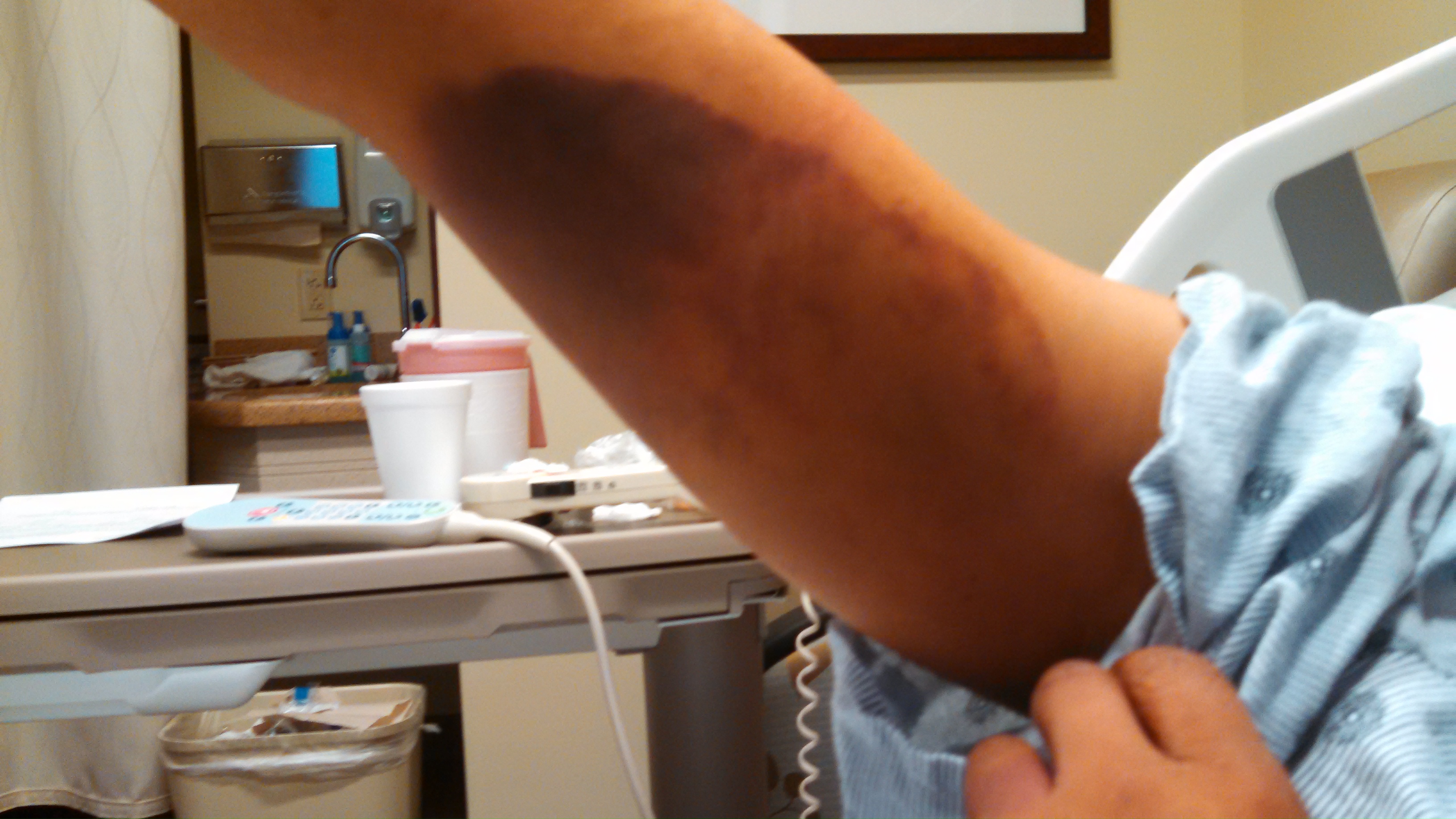Case Presentation:
59 year old female presented to the emergency department complaining of two weeks of atraumatic, painful bruising to her lower extremities, right shoulder, and lower back. She was unable to bear weight on her right lower extremity due to pain. She denied any history of anticoagulant or antiplatelet usage, and denied any family history of coagulopathies. The patient’s only notable family history included two first cousins with SLE.
Vital signs were unremarkable aside from a pulse of 124. Physical examination demonstrated tachycardia, with multiple ecchymosis of the bilateral upper and lower extremities, as well as the patient’s right shoulder. Laboratories revealed a hemoglobin of 8.8mg/dL, white blood cells 16.2 cells/mcL, and platelets of 749,000 cells/mcL. Peripheral smear was non-diagnostic. Partial thromboplastin time was 76 seconds and international normalized ratio was 1.0. Mixing studies failed to correct the coagulopathy. Factor 8 level was 1. Computed tomography of the chest, abdomen, and pelvis demonstrated an 8 centimeter complex left adnexal mass.
The patient was diagnosed with an acquired factor VIII inhibitor and started on oral prednisone, cyclophosphamide and Rituximab, without result. The patient received recombinant factor VII and porcine factor VIII in order to undergo resection of the adnexal mass. Pathology demonstrated serous cystadenoma. On discharge, her Factor VIII level was 223 and her coagulopathy reversed.
Discussion:
Acquired Factor VIII deficiency is an autoimmune disease in which autoantibodies to Factor VIII are produced, and has a spectrum of presentation ranging from acute self-limited bleeding to life threatening bleeding1. The incidence of this disease if thought to be between 1 and 4 cases per million people yearly2. Diagnosis is made via mixing studies failing to correct prolonged activated partial thromboplastin time. Development of inhibitors have been associated with autoimmune diseases, repeated transfusions for Hemophilia major, malignancies, medications, acute hepatitis B and C, as well as with chronic pulmonary diseases3.
Managing hemostasis and eradication of the inhibitor antibody are the key goals of therapy, but present a difficult task for physicians. Hemostasis can be achieved with the use of bypass agents such as Recombinant Factor VII and Activated Prothrombin Complex Concentrate, or via treatments targeted to raise circulating Factor VIII levels such as Desmopressin, and Human/Porcine Factor VIII2. Eradication of acquired inhibitors through immune modulation should be started immediately in patients who present with major bleeding. First line treatments include Steroids with or without Cyclophosphamide, however Rituximab is increasingly being used as a first line agent3. Calcineurin inhibitors and mycophenolate mofetil are alternatives to those failing first-line therapy. Due of the failure of immunosuppressive therapy temporalizing pro-coagulating factors were used perioperatively. Removal of the mass resulted in resolution of the antibody syndrome.
Conclusions:
Acquired Factor VIII deficiency is an extremely rare coagulopathy. We present a case in which paraneoplastic disease caused Factor VIII inhibitors initially refractory to immunosuppressive therapy, which only corrected with chronic immunosuppression as well as resection of her pelvic mass.
